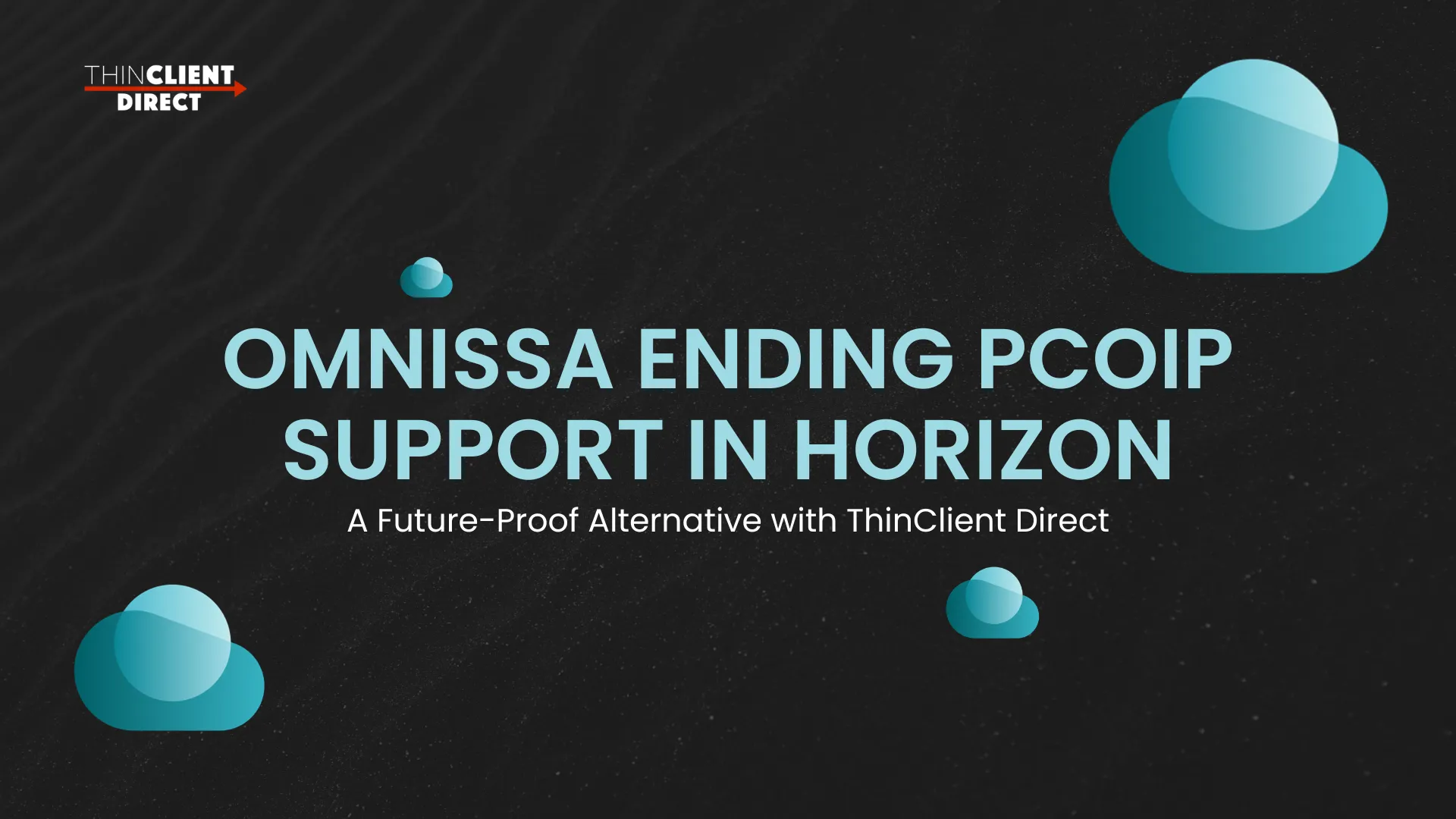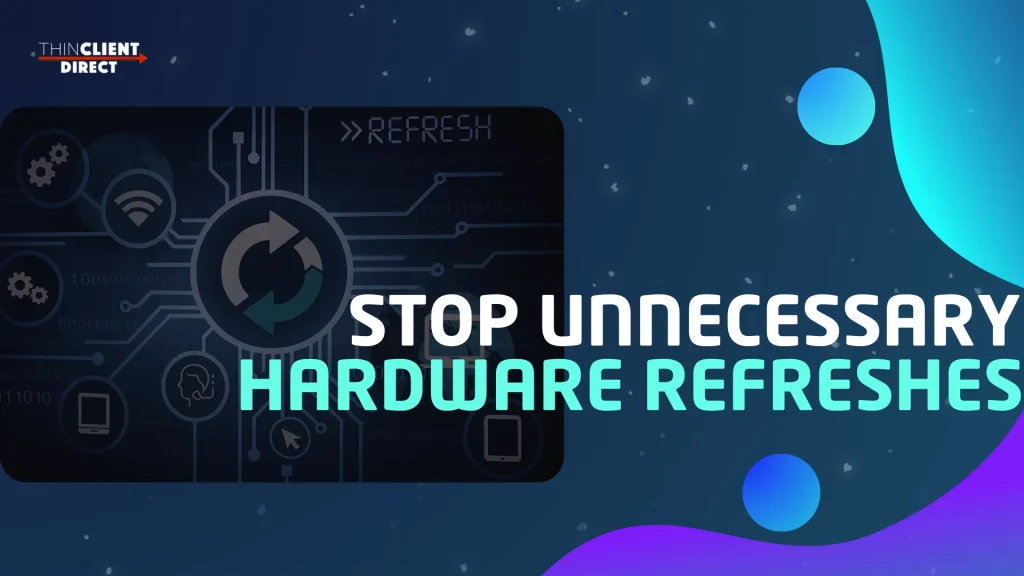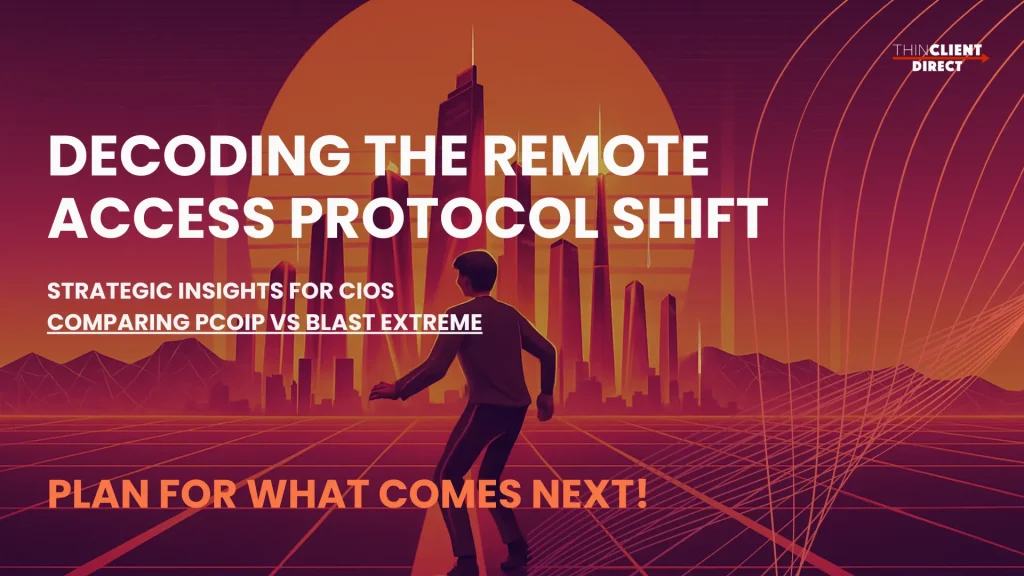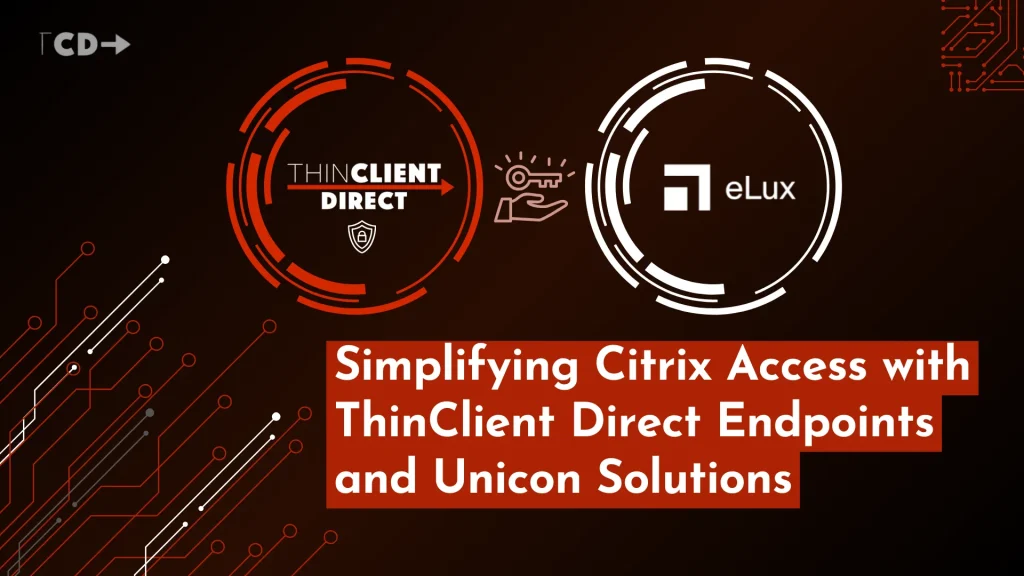Omnissa Ending PCoIP Support in Horizon: A Future-Proof Alternative with ThinClient Direct
September 4, 2025
If Your Horizon Estate Still Runs On PCoIP, Time Is Short
The clock is ticking if you’re managing Omnissa (formerly VMware) Horizon and still relying on PCoIP. Omnissa has confirmed it will remove PCoIP code from new Horizon releases after the Horizon 8 ESB targeted for late 2025, with ESB security/bug updates continuing for three years from that ship date. This sets the runway to the end of 2028 for estates pinned on that ESB—but not for new releases in the future.
This article explains the change, why Blast Extreme is the supported direction, and how ThinClient Direct (TCD) provides a fast, low-risk, and future-proof way to modernize endpoints without sacrificing productivity.

What PCoIP Support Ending Means For Your Business
In practical terms, deprecating PCoIP support means:
- Security exposure over time: Once you move beyond the final ESB, which still contains PCoIP code, new Horizon releases will not include PCoIP. Only the ESB branch shipped near the end of 2025 will receive limited security and bug updates for three years. After that, there’s no safety net.
- Stalled compatibility: New Horizon features and platform improvements will assume Blast. Holding on to PCoIP forces you to freeze client/agent versions and forgo innovation.
- Cloud roadmap constraints: Horizon Cloud next-gen doesn’t support PCoIP, so any hybrid/cloud expansion plans demand a Blast-ready endpoint strategy.
To maintain stability, security, and platform currency, you must now plan your migration from PCoIP to a supported VDI protocol—Blast Extreme.
A Modern PCoIP Alternative Built for Horizon's Future
Blast Extreme is The Supported Path
Omnissa has been clear: Blast Extreme is the protocol of record for Horizon across high-graphics and high-latency use cases. Customers who switched report strong user-experience results, and the ecosystem around Blast now spans both thin and Trusted Zero Clients. For the latest direction and product momentum, read. Omnissa ONE 2024: A New Chapter for Digital Workspaces.
What About Tera2 Zero Clients You Already Own?
If you love the stateless, locked-down operational model of zero clients, there’s good news: HP Anyware Trusted Zero Clients can connect to Horizon using Blast, not only PCoIP. Depending on the model/firmware, you can enable Blast directly or upgrade to a current Trusted Zero Client line that advertises Blast support.
If you have legacy TERA2 devices, evaluate firmware options and plan a phased refresh to Blast-capable endpoints (thin clients or Trusted Zero Clients) as you standardize on Blast. For model-specific guidance, see our article on Replacing HP Thin Clients: Best Alternatives for t420, t530, t620, and t640.
Hardware Designed for The Blast Era
ThinClient Direct specializes in endpoints for modern EUC stacks—built for Blast today and adaptable for what’s next. Whether you prefer lightweight x86 thin clients or want guidance on Trusted Zero Clients, TCD provides a tested, secure, and scalable path off PCoIP with minimal disruption. New to the concept? Start with Understanding Thin Client Technology: What is a Thin Client, Its Benefits, and Key Features.
The Versatile PCoIP Alternative
The TCD 1 Series is Built for High Performance:
- Triple 4K @ 60 Hz displays (dual DP + USB-C) to keep power users productive across dashboards, IDEs, and multi-app workflows.
- Smooth conferencing: Reliable performance for Microsoft Teams, Zoom, Webex, and similar UC apps, so meetings stay crisp and responsive.
- Protocol versatility: Omnissa Horizon (Blast), Citrix HDX/ICA, Microsoft RDP, AVD/Windows 365, and Teradici PCoIP—so your estates with mixed brokers or transitional pools remain covered.
- Upgradeable and future-proof: Expand RAM (4–16 GB) and mSATA storage as needs evolve, stretching device life and protecting budgets.
- Security by design: Enterprise-grade posture with physical security (Kensington slot) and support for secure management workflows for controlled, policy-driven operations.
- Low energy, high efficiency: Quad-core performance with <10 W typical power draw to reduce costs at scale.
For your Blast migration, you can standardize on one thin client platform that handles Horizon Blast now, supports your Citrix or Microsoft side pools, and remains serviceable with in-box upgrades, avoiding another forced hardware cycle.
Prefer Zero Client Simplicity? TCD Helps You Pick The Right Trusted Zero Client
Suppose your environment mandates the “no local OS” operating model. In that case, TCD will help you assess Trusted Zero Clients that support Blast for Horizon (and PCoIP/HP Anyware when required), validate firmware streams, and design a manageable rollout. So you keep the ops model you love while aligning with Omnissa’s protocol direction.
Why Teams Choose TCD for Their PCoIP Exit
- Purpose-built for Horizon’s roadmap: TCD endpoints are engineered and validated for Blast Extreme, so you’re aligned with Omnissa’s supported protocol from day one.
- OS Agnostic: You can choose the OS that is best for you and not be locked in. As Windows 10’s End of Life approaches, here are your options.
- Flexibility across VDI ecosystems: Mixed estates are normal. TCD devices support Blast, Citrix HDX, RDP, AVD/Windows 365, and PCoIP for transitional needs—without locking you in.
- Security and manageability at scale: From device hardening and physical security to integration with your preferred management workflows, TCD fits enterprise control standards.
- Lifecycle resilience: Upgradeable components and ultra-low power draw extend service life and reduce TCO.
- A partner, not just a box: TCD brings deep EUC experience—sizing, protocol tuning, pilot design, and change management—so migrations land smoothly and on schedule.
A Practical Migration Playbook (You Can Start This Week)
- Baseline your estate: Inventory models, firmware levels, and protocol usage (PCoIP vs Blast). Note UC/peripheral needs (Teams, webcams, scanners).
- Choose your endpoint standard:
- TCD 1 Series for flexible, multi-protocol thin clients
- Trusted Zero Clients for stateless ops with Blast (validate models/firmware)
- Validate the user experience: Pilot Blast using your real apps, codecs, and media workloads; test latency and bandwidth headroom; confirm printing, USB redirection, and SSO flows.
- Harden & manage: Apply enterprise policies, lockdowns, certificates, and enrollment into your endpoint management tooling.
- Roll out in waves: Start with the highest-risk/oldest PCoIP pools first; maintain a rollback pool pinned to the ESB where necessary (with precise sunset dates).
- Educate stakeholders: Provide quick-hit guides for Blast client settings, display switching, and UC best practices.
Frequently Asked Questions
- Do we have to replace everything immediately?
No, but you do need a plan. The last Horizon 8 ESB that still includes PCoIP code ships near the end of 2025 and is supported for three years. That buys time to migrate, not a reason to postpone indefinitely.
- Will our existing TERA2 devices work?
Some legacy devices can continue on the ESB path for a time; others may gain Blast via firmware or require a refresh to a Trusted Zero Client line that supports Blast natively. Check model-specific guidance and consider a staged endpoint refresh.
- Why not just stick with PCoIP forever?
New Horizon releases will not include PCoIP support. Staying on an aging client/agent stack limits features and raises security/operational risk over time.
Conclusion: Turn a Forced Change Into an Upgrade
The PCoIP support end of life in Horizon is real—but it’s also a chance to modernize, tighten security, and improve user experience with Blast Extreme. ThinClient Direct gives you a clean, low-risk path forward: modern thin clients that run Blast brilliantly, guidance on Blast-capable Trusted endpoints, and a proven rollout plan that respects your timelines and budgets.
Schedule a free VDI assessment to map your seamless migration path from PCoIP to Blast with a TCD engineer.



